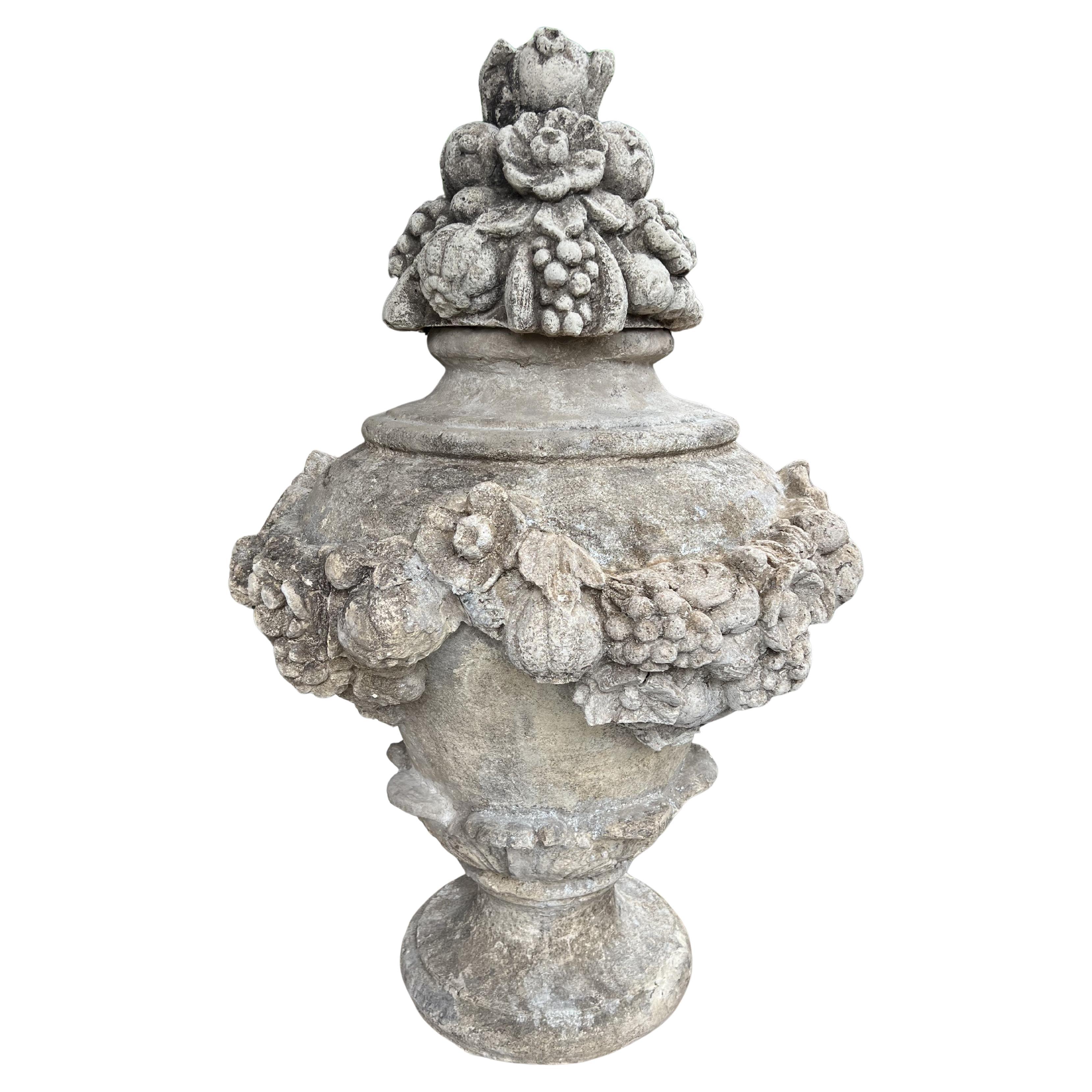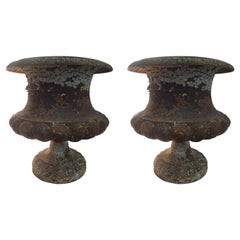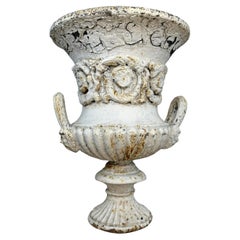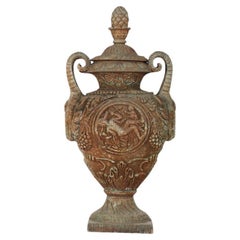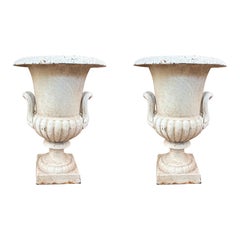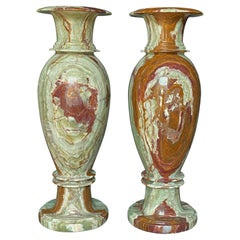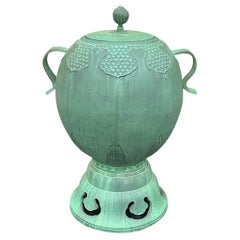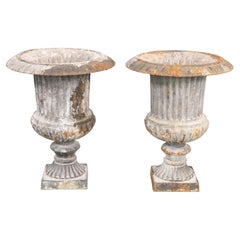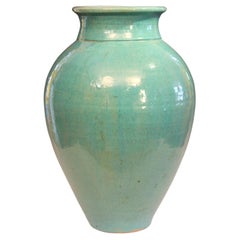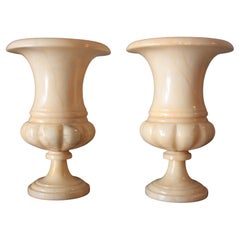Urns
20th Century Italian Neoclassical Urns
Stone, Onyx, Marble
Late 20th Century Unknown Chinese Export Urns
Resin
20th Century Italian Neoclassical Urns
Alabaster
1940s French Neoclassical Vintage Urns
Iron
1940s American Folk Art Vintage Urns
Pottery
20th Century Spanish Art Deco Urns
Alabaster
20th Century Italian Folk Art Urns
Brass
Early 20th Century French Neoclassical Urns
Iron
Early 20th Century French Neoclassical Urns
Cement
19th Century Victorian Antique Urns
Iron
19th Century European Antique Urns
Terracotta
1940s French Neoclassical Vintage Urns
Iron
Early 20th Century French Belle Époque Urns
Limestone
19th Century French Neoclassical Antique Urns
Iron
Late 19th Century Italian Renaissance Antique Urns
Terracotta
Early 20th Century Classical Greek Urns
Iron
18th Century Chinese Qing Antique Urns
Granite
20th Century English Urns
Stone, Cast Stone
Mid-20th Century French French Provincial Urns
Cast Stone
20th Century Spanish Neoclassical Revival Urns
Alabaster, Brass
19th Century French Napoleon III Antique Urns
Iron
19th Century Moroccan Spanish Colonial Antique Urns
Iron
1860s French Napoleon III Antique Urns
Iron
Early 20th Century Greek Rustic Urns
Metal
21st Century and Contemporary American Neoclassical Urns
Concrete
1930s French Rustic Vintage Urns
Stone
20th Century Neoclassical Revival Urns
Marble
2010s American Rococo Urns
Bronze
19th Century French Neoclassical Antique Urns
Iron
20th Century English Neoclassical Urns
Iron
1960s French Vintage Urns
Iron
1880s English Regency Antique Urns
Iron
Late 19th Century American Victorian Antique Urns
Iron
Early 19th Century Italian Neoclassical Antique Urns
Marble
Late 19th Century English Victorian Antique Urns
Metal, Iron
19th Century Spanish Country Antique Urns
Terracotta, Clay, Earthenware, Pottery
19th Century French Neoclassical Antique Urns
Iron
Mid-20th Century Italian Urns
Terracotta
Early 20th Century Spanish Art Deco Urns
Alabaster
1960s Swiss Mid-Century Modern Vintage Urns
Concrete
1950s American Classical Greek Vintage Urns
Iron
Mid-19th Century French Antique Urns
Iron
20th Century European Greco Roman Urns
Concrete
Early 19th Century English Antique Urns
Iron
20th Century French Neoclassical Urns
Iron
1920s Italian Classical Roman Vintage Urns
Terracotta
19th Century French Victorian Antique Urns
Onyx, Enamel, Bronze
1860s American Victorian Antique Urns
Iron
19th Century French Neoclassical Antique Urns
Iron
1920s American Arts and Crafts Vintage Urns
Pottery
Late 19th Century American Industrial Antique Urns
Iron
2010s Mexican Modern Urns
Fiberglass
Late 20th Century Neoclassical Urns
Iron
1960s Swiss Vintage Urns
Concrete
1840s Italian Neoclassical Antique Urns
1980s Italian Vintage Urns
Wrought Iron
Late 18th Century French Antique Urns
Iron
Early 20th Century French Urns
Iron
Mid-19th Century English Regency Antique Urns
Iron
Early 20th Century Classical Greek Urns
Earthenware
Vintage, New and Antique Urns
When people think of antique and vintage urns — a type of vase with a round body, narrow neck and integrated pedestal — they tend to imagine funerary urns. But all manner of urns have been made over the years, and these vessels can be used as decorative accents either inside your home or in your garden.
Garden urns became popular in early Greek and Roman gardens, where they complemented classical statues and other garden ornaments. Over the years, people have used urns as planters, fountain basins and stylish decorative elements in interiors as well as outdoors in gardens, patios and firepit areas.
Urns are typically made of stone, ceramics or metal. Stone urns are highly durable; while an antique stone urn will show wear with age, it can be used in any climate, and a neoclassical-style cast stone urn with natural world motifs carved in relief is guaranteed to make a statement in your garden. Position two stone urns with vibrant hibiscus bulbs or tulips at the bottom of an outdoor stairway to set it off from other exterior features. Elsewhere, place your urn in the middle of a garden bed to draw attention to your dazzling landscape design. A good concrete urn can easily make a good home for small trees or shrubs, but it will be very heavy to move around.
A ceramic urn is likely going to have thick, robust walls. A glazed terracotta urn, for example, is going to be ideal for potting plants. As glazing is part of the potter’s process for creating a terracotta urn, the urn itself can provide a pop of color to contrast with any low-maintenance plants such as moss or succulents that you have in mind for it.
Metal urns are best used as decor in your living room or foyer rather than outside, unless you’re partial to the alluring weathered patina that is expected to characterize an antique cast-iron garden urn. If you’re planning to use a metal urn as a planter, add a plant liner first. Metal may overheat and damage a plant’s roots if they are not protected, and urns made of certain metals may rust if they’re left outdoors.
But you don’t necessarily need to turn your urn into a planter.
A large urn can hold its own as an accent in any space and create a strong focal point. Browse the collection of decorative antique and vintage urns on 1stDibs today.
